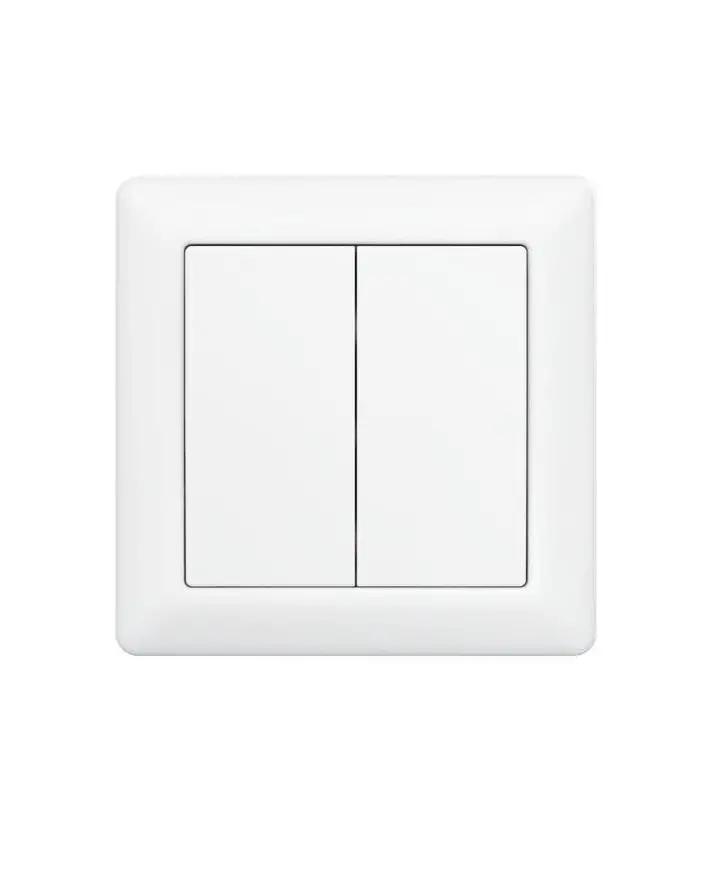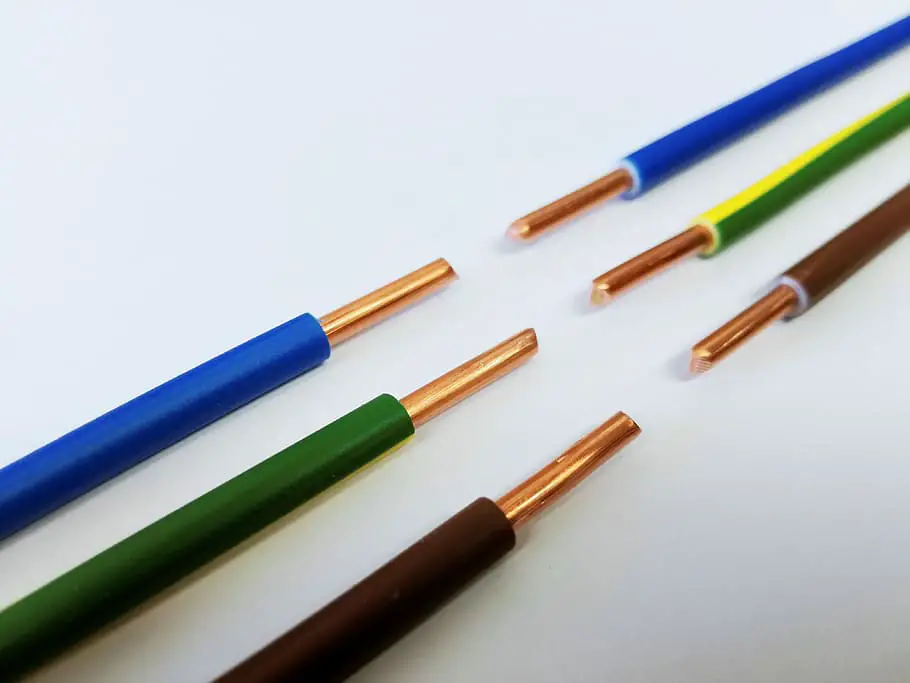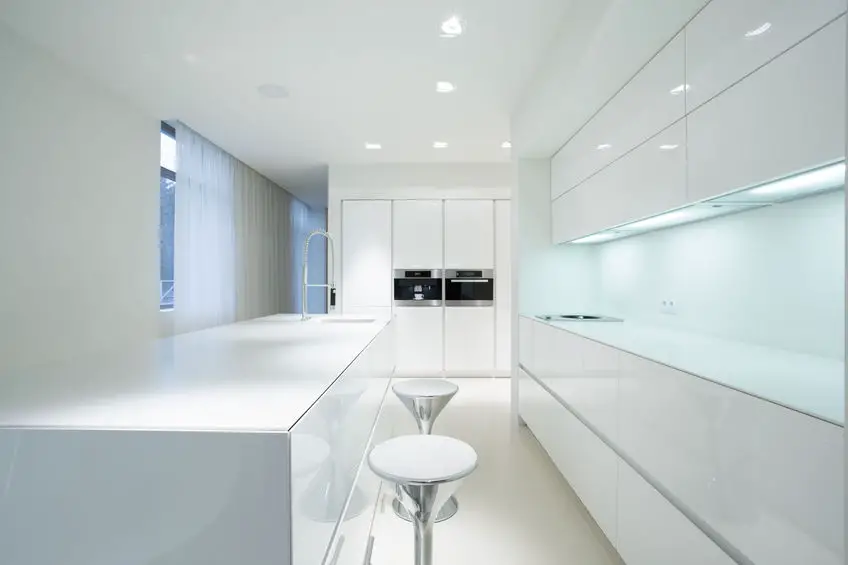The Different Types Of Light Switches
Being able to toggle the on and off state of the lighting in a facility or home is a very important feature for any building to have. This is why light switches were invented in the first place.
Light switches come in many different forms, some that are most likely familiar but some that are not very common at all. Here we are going to take an in-depth look at what light switches exist today and how they function.
Contents
Single Switch
The single switch is one of the most common forms of light switches. This is mainly due to its simple but effective purpose; to turn the lighting on or off.
This light switch has become a staple of all light switches due to its simplicity in function but also due to it being an evolution of the first light switch design ever, which was constructed as early as 1884.
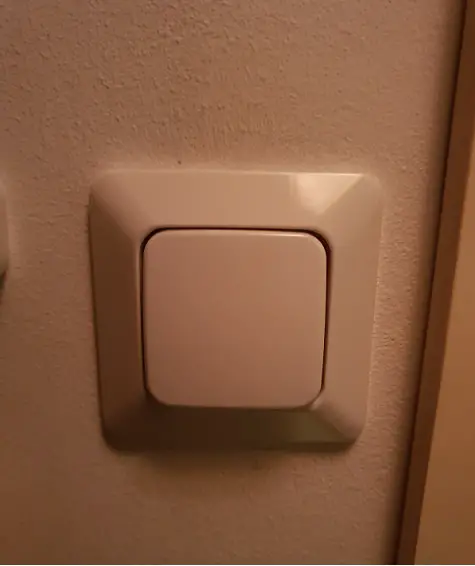
Function
The functionality of this light switch is very easy. The way it controls the state of the lighting is by simply alternating between allowing and disallowing an electrical current to flow through the light bulb.
It functions this way since the light switch becomes a physical breaking point within the electrical circuit, causing the electrical flow to stop if the switch is ever flipped.

The way this happens inside of the actual real-life switches is also rather simple. When the switch is closed (meaning that the circuit is connected and therefore on) there are 2 metal plates that are joined together. These plates are connected to separate ends of the circuit, one for the incoming flow of electrons from the power source and one that goes out towards the lamp.
One of these plates is connected to the part of the switch we flick whereas the other plate is placed in a fixed position on the backside of the switch. Since one of the plates is connected to the part of the switch that we interact with it becomes easy for us to simply toggle the state of the lighting.
This, therefore, causes a point in the circuit where we can either close it or open it depending on what state we wish the circuit to be in.
Usage
This type of switch is very simple in its construction, meaning that the tasks it is designed to do are rather simple too.
The most common usage of a switch like this one is when you have either 1 single fixture or a single group of fixtures in the same room that you wish to control together. This is mostly for simplicity’s sake since it is not necessary to have a double switch for a small storage room with only 1 to 4 fixtures.
There is however no limit to how many fixtures it can be connected to or how big of an area it can control. As long as the electrical load of the lighting doesn’t overpower the fuse or the cables there is no limit to how much it can control.
It is however possible that some specific switches have additional instructions that state how big their load is allowed to be. If it does have a maximum allowed wattage then that is the number you should follow but as a rule of thumb, it should be safe to assume that the load is only dependent on the size of the fuse and connected cables.
The main downfall of this switch is that it is not as flexible as some of the other options, meaning that you can get a more precise functionality out of other types of switches. This is however a perfect option if the area is small and the lighting is supposed to be controlled in unison.
Double Switch
The double switch is also a very common form of light switch much like the single switch. This is due to its versatile and simple functionality which makes it an ideal choice for a lot of different applications.
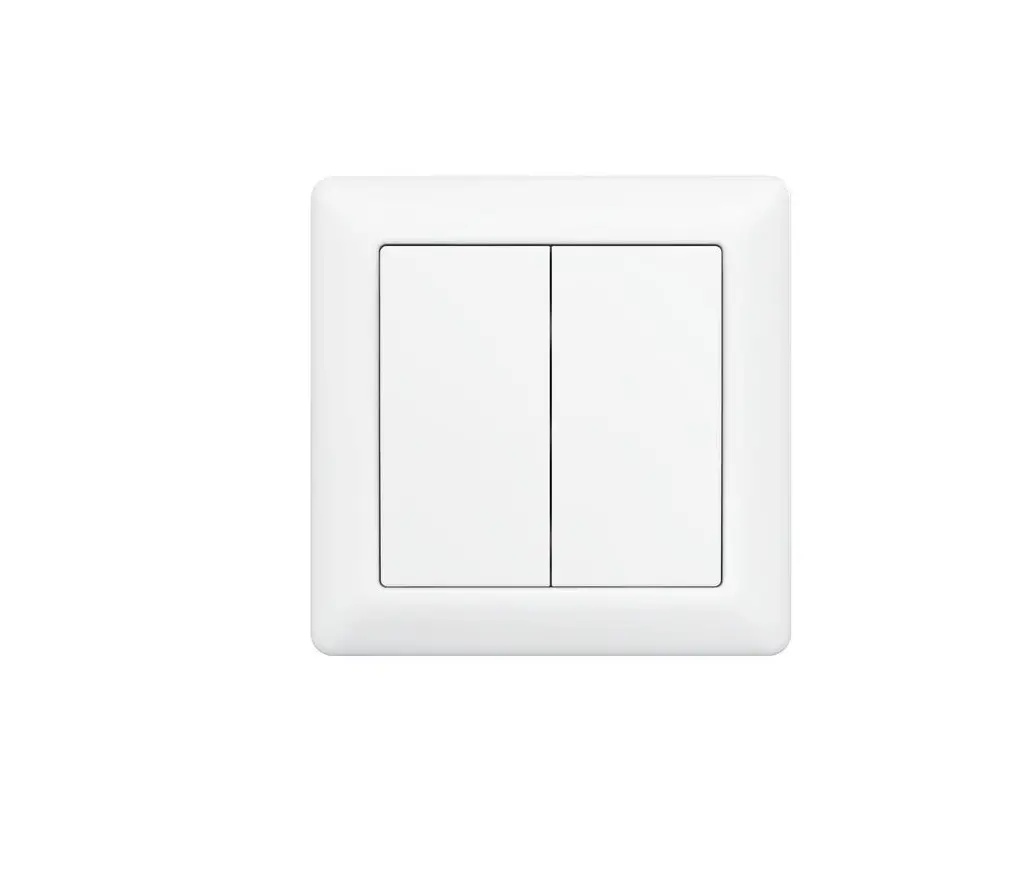
Function
The physical function and properties of this switch are very similar to the one of the single switch. This is because the double switch in its simplest form is simply 2 single switches put side to side.
This is done in order to get the same function of the single switch but be able to do it for 2 separate groups in the same room without having to put up 2 separate single switches. This also gives the added advantage of saving space on the wall since the double switch takes up the same amount of space as the single switch.
Usage
The usage of this switch is very wide since it fills the basic function of a light switch but with more flexibility as it can control 2 separate lighting groups in the same room.
A few examples of where this switch could be used are:
Bathrooms with separate lighting for the ceiling and mirror.
Bedrooms with separate lighting for the ceiling and window.
Bigger rooms where you want the lighting split up into 2 groups.
An office room with separate ceiling lighting and pendant luminaire.
As can be seen, the basic usage of this switch is for areas where controlling the lighting independently from each other is desired. This can be the case in any given building or environment.
Triple Switch
The triple switch is a rather uncommon switch but is still used to an extent. This switch is similar to the double switch in that it takes the same amount of physical space as the single switch but can control 3 separate lighting groups.
This comes in 2 main designs, one in which the switches are stacked vertically or next to each other horizontally. Functionality-wise it makes no difference however the horizontal one is used far more than the vertical design.

Function
The triple switch is much like the double switch in the way it is constructed. It is simply 3 separate single switches mashed together to form a switch with 3 separate switches that all work independently from each other.
Usage
As mentioned this switch is not very common, which is due to their installation process of them. On the front end, these switches work perfectly fine assuming that they are wired correctly, it is simply the wiring aspect of them that can become frustrating and in some cases not possible.
This is because there is simply a lot going on inside the backend of the switch, which can cause issues in a few different ways. These issues are:
Too many wires through the piping through the inside of the wall. The most standard piping for installations is 16mm in diameter and will house a maximum of 5 separate wires.
When working with these switches you will need at the very least 4 in order to utilize their full function, 1 for the phase input and 3 separate wires going out towards the individual fixtures.
This becomes a problem as it is very common to run the earth and neutral cables down the same pipe, which then exceeds the maximum of 5 wires.
This problem can be worked around by either using a bigger pipe or adding another pipe to the same switch, but this can be rather obnoxious and other solutions are usually used instead.A very messy back end. In some scenarios, it is possible that all this wiring in the back end of the switch is simply too much which could make it impossible to mount the switch to the wall.
Increased chances of possible heat generation due to many compressed wires. This can in turn become a fire hazard as wires generate a large amount of heat when packed tightly together.
Despite this though there are definitely applications for when a triple switch could make sense. For example, it makes sense in homes with multiple light fixture groups in a kitchen or a living room, which are both places where you might wish to control the different light groups separately.
Dimmable Switch
The dimmable switch, or more commonly known as a dimmer comes as a turnable knob in which you can not only turn the lighting on and off but also get it into states in between.
The dimmer was the first type of light switch that allowed for this functionality, making it rather revolutionary.
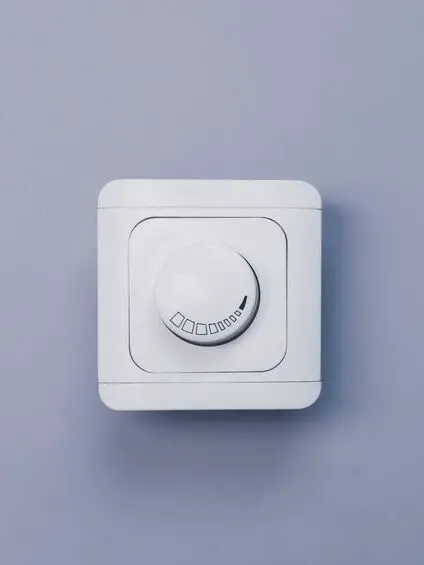
Function
Since the purpose of a dimmer is to toggle the light output from a light bulb the dimmer needs to regulate the input of current it receives. It does so by modifying the sine wave that is present within the electrical current.
In an AC current, the polarity of it will switch from negative to positive a set amount of times within a second, which is measured in Hertz (Hz). Between different countries, it is normal to have a frequency of 50-60 Hz.
By modifying the sine wave it is possible to also modify the light output of the bulb. The way this is done is by cutting the sine wave short in either the first or second half of the wave, causing the period of time in which the bulb is on to become shorter.
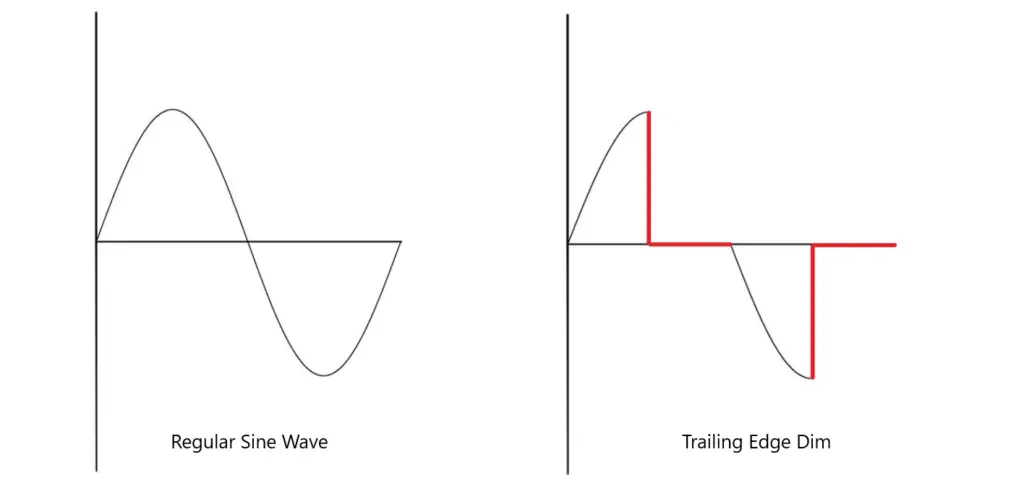
This itself is what causes the dimming effect. The more of the sine wave that is removed the less the bulb will glow. This works in a 1:1 ratio in that the amount of the sine wave removed is directly proportional to the amount the bulb will glow. An example of this is that if you remove 50% of the sine wave the bulb will give off 50% of its original light output.
Usage
The usage of the dimmer switch varies quite a bit, however, it is very versatile. It can be used in just about any home as a replacement for the single switch as it controls one group of lighting the same way the single switch does.
Something to keep in mind however is that there is usually a minimum and a maximum electrical load listed on the dimmer, meaning you need to be aware of not over or underloading the dimmer. If the dimmer doesn’t have the required wattage attached to it there is no guarantee that it will work the way it is supposed to.
Slide Panel
The sliding panel is rather uncommon but works very similarly to the dimmer in functionality. It is simply a panel with a knob that slides up and down that regulates the light output based on how far up or down the knob is slid.
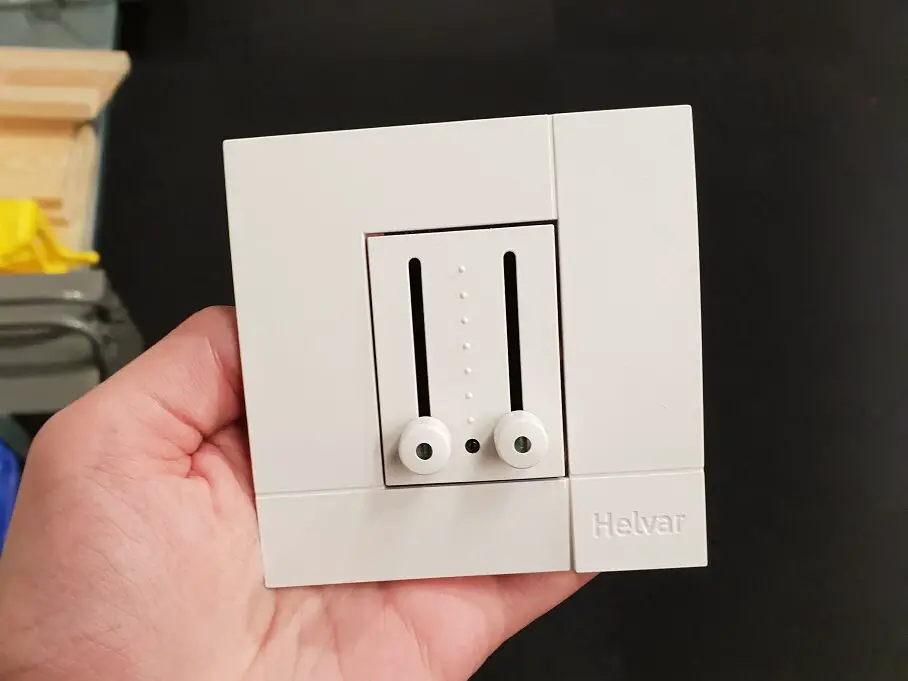
Function
As mentioned the functionality of the slide panel is very similar to the one in the dimmer. This is because they make use of the same technology but are constructed to be their own designs.
Usage
The usage for the slide panel can vary quite a bit since the main difference between it and the dimmer switch is the design. This means that they are useful for the same function but perhaps for different applications, where a sliding panel fits the design of other parts of the building more.
As an example sliding panels could be used as a way to control lighting from a mixer board in a theatrical or concert setting. If the lighting isn’t complicated enough to the point where it uses its own programming it is a good option to use a sliding panel for light control since mixer boards also have a lot of sliding components which therefore fits the aesthetic more.
Button Panel
The button panel simply acts as a physical selection menu where you can select between pre-programmed “scenes“ of lighting. For example, it is common to have different scenes such as 100%, 75%, 50%, and 25% light power from all connected fixtures.
These numbers can however be altered to any percentage value on any given fixture since most button panels are used in unison with a DALI control system.
DALI stands for Digital Addressable Lighting Interface and is a controlling protocol in which it gives each connected luminaire its own digital address, meaning that it can be controlled individually through its address if desired.
Function
As mentioned the button panel allows users to select a pre-programmed lighting scene, which is done using the DALI protocol.
DALI works by sending command signals of 1-10V DC through a bus cable which then tells the lighting what power level it should be at and in turn how much light it should produce. The control bus consists of 2 wires, one positive and one negative in order to transfer the control commands.
Through these signals, it is possible to regulate and control the lighting specifically based on how big the signal is. If the signal is 10V it means to turn everything on 100% and if the signal is 2.5V it means to turn it on 25%.
Usage
This type of panel can be used for a lot of different applications. The main perk of it is the ability to store a lot of light scenes to it, meaning that it makes sense to use this in places where events of different occasions take place.
For example in an office, there would be scenes for regular usage during the day and other scenes for more special occasions, such as an after-work party or an office showcase of some kind. It can all depend and be completely altered depending on the user’s needs.
Smart Switches
Smart switches are similar to button panels in that they both make use of the DALI system and that they both have selections for light scenes.
The main difference is that the smart switches have a few more complicated functionalities since they also allow for easy integration and control of Tunable White and RGB lighting.
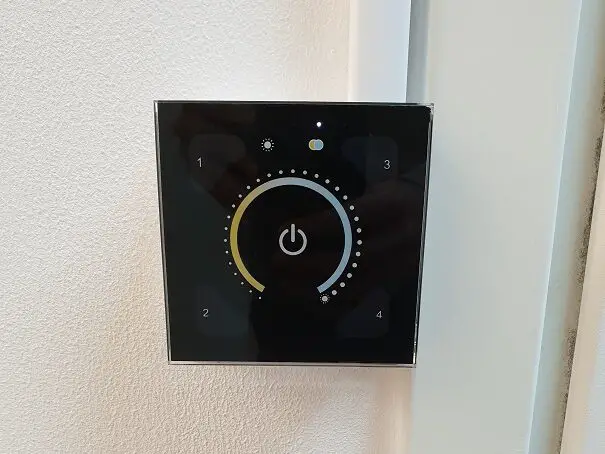
Function
These switches are also as mentioned integrated with a DALI system, meaning they send low-voltage signals in order to change the light output. However, there is a bit more complexity to these switches since there is the ability to switch to different options such as colour temperature change or RGB colour change.
This is done by the switch sending a signal to the computer intelligence in the system about what it wants to modify whenever the mode on the switch changes. This allows for control of more than 1 aspect of the lighting.
Usage
This switch can be used in just about any application since it is extremely versatile and can control lighting in ways most switches can’t.
Since these switches can control the colour temperature it could be optimal to use these switches in offices where Tunable White features are desired for the user’s comfort. However, it can be used just about anywhere without drawbacks.
As for their function, these are top-of-the-line but that also means that their price of them will be similarly high, which is the main downfall of this switch.
Touch Screens
Touch screens are very similar to smart switches in their functionality but can also do things that other screen-based technology does such as displaying time and temperature
Function
They function the same way smart switches do in the sense that they are connected to the DALI bus and send signals through it to make changes to the lighting.
For some models, it is also possible to connect them to a wifi network. This allows them to access the internet and therefore also collect data on other desired parameters which could be related to for example the news or the weather.
Usage
These switches can be used anywhere without any issues but they are definitely not meant for regular use in homes or for smaller applications. They are better suited for modern buildings where having the flashiest technology is desired. They of course function great, however, they rather overkill for most applications.
Remote Switch
Remote switches can come in a few different forms. These forms range from a remote control similar to the ones of TV remotes whereas nowadays it is common to use your cellphone as a wireless switch for home lighting.
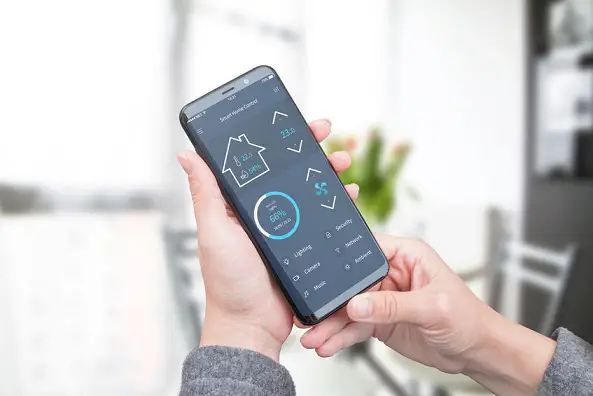
Function
The functionality of these switches are a bit different from the others on this list since in order for a remote switch to work there needs to be a point in the system that the remote can send signals to. This “access point” is not normally present in regular light control.
This access point can vary in its construction but the most common way for it to be designed is a similar shape and size to an ice hockey puck. This unit is usually hidden either right behind the light switch or in the junction box where all the wires in the system connect to each other.
Usage
The usage of this type of switch is varied but nowadays mostly finds its way into smart homes. This is mainly because they are suitable for smaller areas due to the output size of the controlling unit.
It also makes sense in home environments because the amount of regular users is smaller, which is preferable in a system involving portable controlling devices.
Other Ways to Control Lighting
While these are all different forms of direct light switches that we interact with there are also ways of controlling lighting that doesn’t involve any form of interaction with us. These mainly revolve around different sorts of sensors.
Acoustic Sensor
The acoustic sensor is a type of sensor which picks up sounds to detect if somebody is in a particular area. This information is then used to send a signal through the DALI system and therefore toggle the lighting that way.
PIR Sensor
A PIR (Passive Infrared Sensor) is a sensor that uses infrared rays to determine if there are people within a certain area. It does so by seeing if there is an obstruction within the rays that the sensor sends out.
If there are breaks in the rays it will notice that and send a signal that there is somebody there. This signal can however be programmed to do different things. A very common way they are programmed is that they turn the lighting both on and off which can be inefficient and cause a bad user experience.
This happens often in public toilets where it will light up and go dark based on motion. However, it is not very sensitive at all, meaning that it can cause the light to turn off even when you are still there.
This is why they are more efficiently used as a turn-off feature instead. This works by having a PIR sensor that still senses your presence even when you aren’t moving.
This way nobody gets annoyed over lighting that shuts off when you are still there but also acts as an energy saver when nobody is there for an extended period of time.
Daylight Sensor
Another clever way lighting can be controlled is by using daylight sensors. These sensors are used to determine when sufficient light is being cast on a certain area and based on that information send signals that determine the state of the lighting.
This works well in the context of energy savings since they can be used to phase out artificial lighting during hours when there is plenty of sunlight coming in through windows.
External Signals
One more way that can be used to control lighting is through specific external signals. These signals would come from other parts of the building, for example they might come from the security or fire alarm system.
The way this would work is to program these external signals into the controlling system. In this case it is possible to control it such that the lighting will turn off upon locking the facility and to make the lighting go to 100% when the fire alarm goes off.

